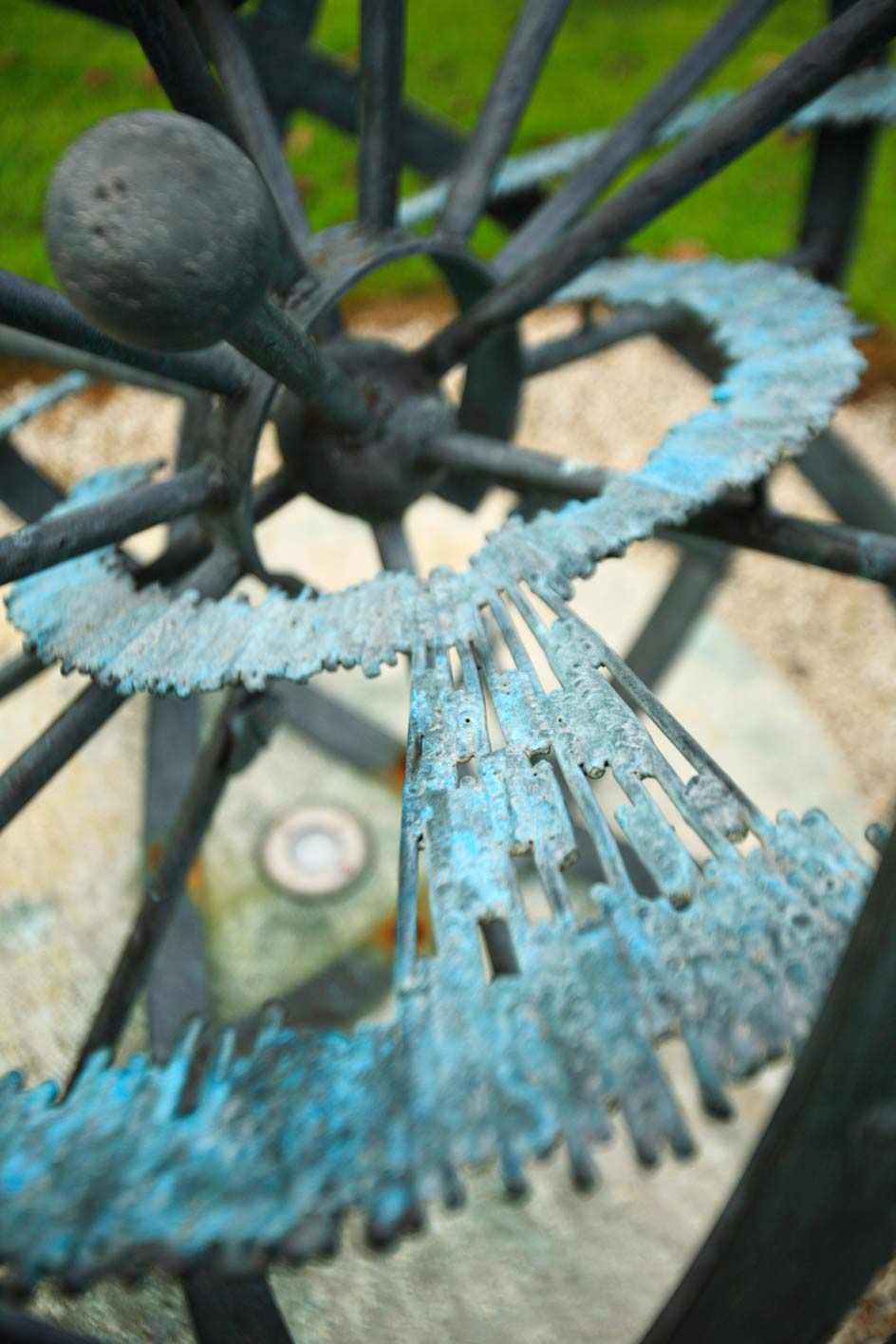Rath an aonaigh / Fort of the fair
by Niall Bruton
The small housing development to which this per cent for art scheme is mainly attributed is located in the townland of Rathneeny beside Lahey, Co. Donegal. In research into the history of the area as of source of inspiration for the proposed artwork, the origins of the name Rathneey itself offered, for the artist, the best visual reference and imagery with which to work. The Anglicised name Rathneeny comes from the Gaelic Rath an Aonaigh, which translates into English as ‘Fort of the Fair’. In his proposed sculpture, the nostalgic circular form of the cartwheel is combined with the strong circular outlines of the Rath or hill fort enclosure, the faint remains of six, which mark the surrounding drumlin hills. Visual References: The ‘Fair’ as an occasion of commerce and communal gathering brought to a central place, is represented by the functionality of a cartwheel in its historical use as one of the most important means of transport in bygone days, in taking people and goods to the fair.
While visually the criss crossing of the spokes at the centre point or axle symbolize this sense of convergence of people. The ‘fort’ as a round enclosure offering protection from war and weather is most basically rendered through the simple geometric form of a circle within a circle, wrapping itself around its vulnerable contents. There are strong astrological references in the proposed artwork also, reflecting the high importance of the ancient inhabitants of the Raths bestowed on celestial movements. The reference to Laghey fair in ‘Old Moores Almanac’ as being held on the 15th day of each month suggests a lunar connection of old.
rath an aonaigh / fort of the fair, 2006
Commissioned through a open competition, rath an aonaigh / fort of the fair is 1e metre in Diameter, made from Bronze and is located in Lahey, Co. Donegal, Ireland.




Biography of artist
Niall Bruton
Born and reared in Dublin, Niall Bruton graduated from the National College of Art and Design in 1986. While there he concentrated on the casting and fabrication of metals in a sculptural context and developed these techniques further in studio experience in Florence, Italy and Valencia, Spain. Now long established in Donegal with a workshop and studio in Donegal Craft Village, Niall work is primarily commission based rather than exhibition orientated, with a high emphasis on craft, technique and quality of build. He has developed a wide range of jewellery designs in precious metals – micro sculpture at an affordable level, as he likes to see it. For the most part, the jewellery is abstract in form and narrative in undertones.
This is a contrast to some of his larger public sculpture commissions, which have for the most part been figurative in form such as the life size Famine Commemoration Sculpture in bronze at the Quayside in Sligo or the larger 3-meter form in Bronze ‘Waiting on Shore’ at Rosses Point, to commemorate local sea tragedies. Niall has also undertaken commissions of a semi functional nature with sculptural works such as the stainless steel & bronze entrance gates to Sligo Famine Graveyard and Irvinestown Graveyard whose tragic themes are rendered through their silhouetted liner motifs. Bruton can be contacted at his studio at the Craft Village, Donegal Town, Co. Donegal


